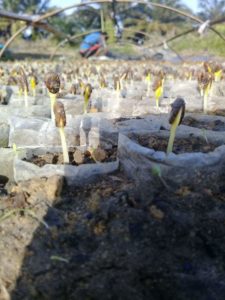A great way to start the new crop year is to commit to invest in healthier soil. The soil is much more than a medium for growing crops; it’s a living biological ecosystem. We rely on the billions of tiny microorganisms to do their jobs and create a favorable environment for plants to grow. Allow these microorganisms to work for you, and in turn, you will reap the benefits.
More farmers in Indiana than ever before are managing their farms in a soil health management system. Farmers have been farming soils that have been degraded over the last 75 years largely due to the overuse of tillage and a monoculture cash cropping system of corn and soybeans. Farmers have been able to produce ever-improving yields using fertilizer, pesticides and improved seed hybrids, but will that always continue to be the case?

Farmers across Indiana who have implemented the four principles explained here are finding they can improve the health of their soil, maintain yields and build a soil that is more resilient to changes in weather.
Here are four things you can do to develop healthier soil on your farm:
1. Increase soil biology diversity. There are no monocultures in nature. The plant community on the soil surface directly impacts the soil biological community below the surface. The plant community and its roots are a food source for soil biology. Different kinds of crops and cover crops help feed and support the biology in the soil.
2. Lengthen growing season with continuous living roots. The sun is the ultimate source of energy, and it is free energy. Capture more sunlight and put that energy into your soil. One way to do this is to plant a cover crop that will continue capturing sunlight well after your cash crop has shut down. Roots growing all year help keep the microbiology in the soil healthy and productive.
3. Decrease disturbance. Extensive tillage is detrimental to soil health. When soil is tilled, the biological community is flipped upside down, pore channels are broken, and organic matter is lost. A no-till system will improve the health of your soil.
4. Maintain soil cover. Keep soil cover such as residue, mulch or plant stalks on the surface. The purpose of soil cover is not just erosion protection. Residue maintains stable conditions for microorganisms. Soil microbes live in that residue at the soil surface and convert it into organic matter and nutrients. Soil microorganisms are more active at constant moisture and temperature conditions, and the residue on the surface goes a long way in maintaining that consistency.
